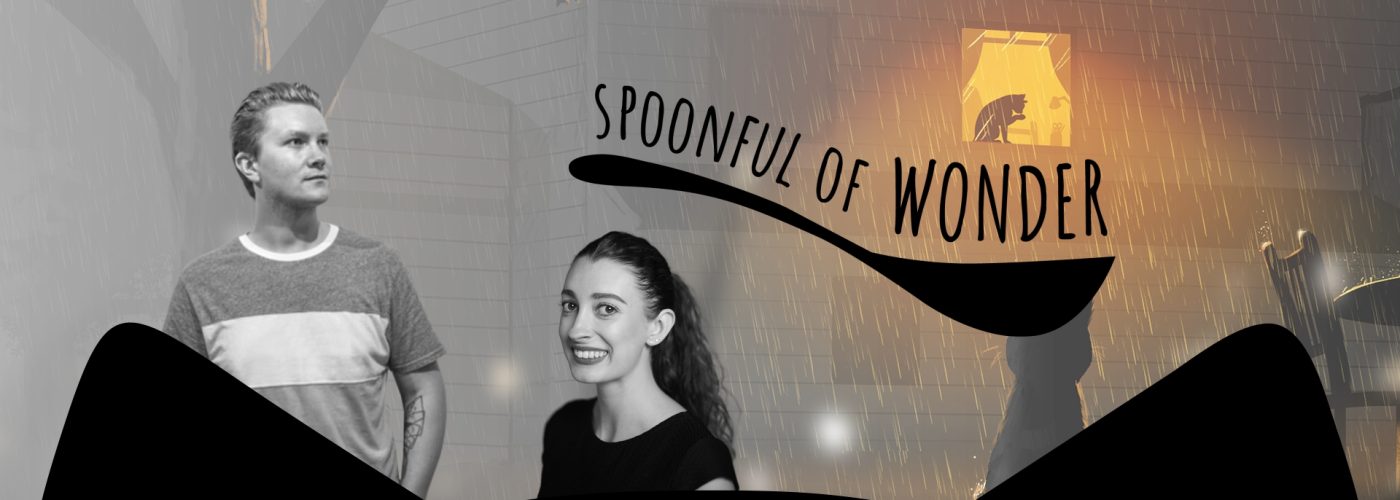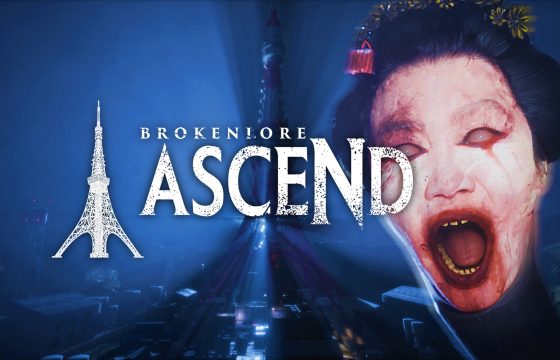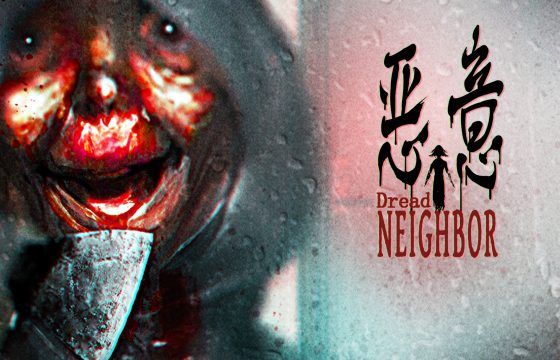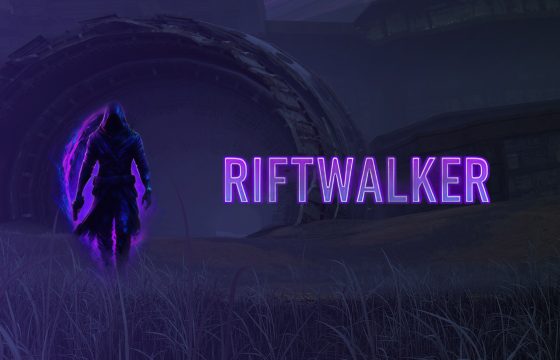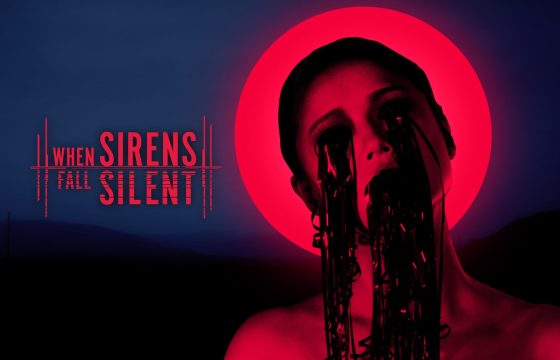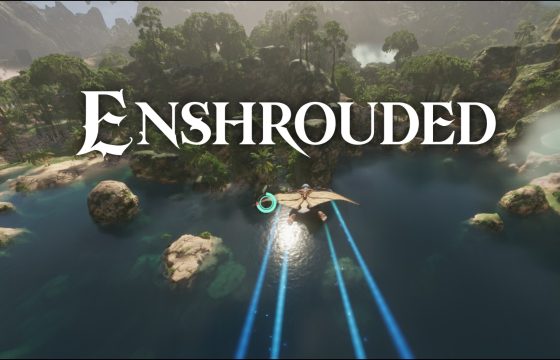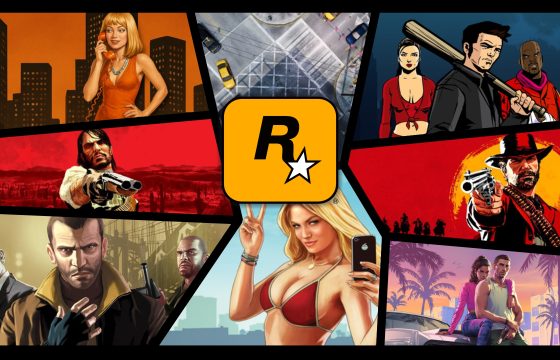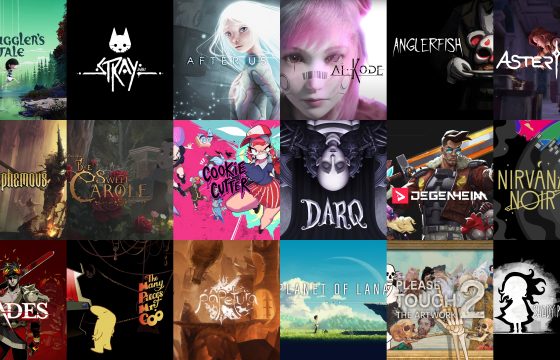How does one manage a cat in a recording studio, and how do you voice a cat, especially when that cat is the absolute protagonist of the story? Let’s ask Samantha Cable and Kostia Liakhov, founders of the independent studio Spoonful of Wonder.

Let’s revisit Copycat, the highly anticipated story-driven cat adventure and the debut video game from Spoonful of Wonder, a small three-person independent studio based in Sydney. The studio was founded by Samantha Cable and Kostia Liakhov, a young couple propelled by an insatiable passion and love for their craft. They are two creatives dedicated to art and creativity.
Today, we’re thrilled to share something truly special with you: our interview with the two leading minds behind the project. On one hand, Samantha, the Game Director and Head of Narrative, is the mastermind behind the poignant and evocative narrative that weaves through and guides the entire gaming experience. On the other hand, Kostia, the Game Director and Head of Art, is responsible for the exquisite artistic direction and the vibrant game world of Copycat.
An interview that will take us on a journey of discovery into Copycat, providing numerous insights into the project, as well as uncovering a bit more of Samantha and Kostia’s beautiful story. However, before we dive into the interview, if you haven’t already, take a quick look at our exclusive preview of the first act of Copycat.
With all the necessary introductions made and details provided, we are now officially ready to welcome you to the interview. Enjoy the reading!
The Interview
Hello Samantha and Kostia! Allow us to begin the interview with an introductory question, aimed at helping us understand a bit more about your story. How did you two meet, and how did the Spoonful of Wonder project come to be?
Kostia: We’ve known each other for quite a long time—eight years, to be exact, almost nine soon. We met while working our first jobs in Germany in the advertising industry. We were a creative team in an advertising agency, and I think we started working together back then. We developed our partnership and have been doing creative work for a living in advertising. However, we’ve always had side projects; we were always interested in short films and animations.
Samantha: We noticed that our skill set shines when we create projects that mean something to us. Kostia handles the art and direction, focusing on visuals, while I handle ideation, writing, and everything related to the story. We’ve collaborated on a short film and a children’s book. Then, we decided to jump into the world of video games.
Kostia: Being creative enthusiasts, we’ve always loved video games; we grew up with them. We felt that we finally had enough skills and knowledge to attempt something like this.

Spoonful of Wonder is a clear testament that willpower, creativity, and believing in something greater can break through any sort of space-time barrier demonstrating that no limits are truly insurmountable. Stepping back for a moment, we’d like to ask: what has been the most challenging moment in your journey, and how did you overcome it?
Samantha: We believe that we can quickly learn the skills needed for various creative activities. For example, Kostia didn’t start out knowing how to code, and I didn’t start out knowing how to write a game, but we acquired those skills fairly quickly. The aspects we find more challenging are the business-related tasks, such as accounting, taxes, and working with lawyers, which are equally important.
Kostia: Given that we’re a very small team, we can’t afford to hire a dedicated manager or producer to handle these tasks. So, sometimes we have to step out of our creative bubbles and deal with accounting and other business matters, which isn’t fun but necessary. Another significant challenge, which many indie developers can relate to, is securing funding for the game. We began working on Copycat as a hobby project, dedicating weekends and evenings after work. However, to take the project seriously and create a quality product, we needed to secure funding. Finding these funding opportunities was quite difficult, but we were lucky to receive support from Screen Australia, our government body that provides development grants. We are very grateful for that opportunity.
Often, symbols and deep meanings conceal stories as mysterious as they are memorable, speaking to the soul. Is this the case with Spoonful of Wonder and its logo? What does the logo convey about your vision?
Kostia: When we started Spoonful of Wonder, we wanted the name and logo of the company to reflect the type of work we are passionate about.
Samantha: We both grew up watching powerful stories told through animation, and we wanted to bring that same storytelling magic to the world of video games. Our goal was to capture that spirit in our logo and brand, which represents the essence of our creative work.
How did the idea of developing a video game centered around cats come about, and why did you choose the name “Copycat” for the game?
Samantha: Yeah, it’s definitely the cat Renaissance at the moment. We wanted to write about something familiar to us, and we’ve both grown up with a lot of cats around us. We often wondered what they really think of us. Around that time, my grandma was getting older and couldn’t take care of her pet anymore. We wanted to explore her perspective—being independent, a proud pet owner, but not able to put in the full effort.
Kostia: We tested the name “Copycat” with some friends, and a few months later, one of them remembered it and mentioned the project. That made us realize it was a good name to stick with. The name itself ties directly into the narrative of the game—it’s all about the concept of a copycat, though we don’t want to spoil too much. It’s also a single, memorable word that includes “cat,” making it a powerful and easy association.

The narrative of Copycat will unfold within an intense and emotional three-act story. Could you share more details, going beyond what we already know, about how the narrative arc will be structured? What should we anticipate?
Samantha: We created a transformative three-act narrative structure where the first act is all about Dawn, the second act focuses on Dusk, and the third act returns to Dawn. This metaphorical journey comes full circle. Our turning point in Act One occurs at the end of the demo, where Olive finds herself on the bathroom floor, and the player gets to choose whether to stay or leave. Much of Act Two follows Dawn’s journey from home to homelessness as she tries to find her place in the world. And then, Act Three is a bit of a surprise—you’ll have to play to find out what happens next.
In Copycat, we can expect to encounter a wide range of sensitive themes, such as adoption, loneliness, belonging, and abandonment. These are just a few of the themes that the adventure will delve into, an introspective journey through Dawn’s eyes. What is the central message you’d like to convey? And what would you like to communicate to those who watch and play?
Samantha: Our game has always been about the meaning of home. We both have different approaches to what home means to us. Growing up, my family traveled and moved around every year. We would pack up, leave school, move to another school, pack up again, and move to a new house. So, my idea of home has always been very fleeting.
Kostia: For me, it’s almost the opposite. Until I was about 22, I lived my entire life in one place. Unfortunately, my home is now in the middle of a war zone in Ukraine, making it inaccessible. This situation has made me reflect on what home means to me as well. Is it a place? Is it the people? We’re just trying to find meaning and make people think about what home means for them.
Samantha: That’s the very first question posed in the demo and at the start of the game: “Home is not where you live, but where you’re needed most.” This is almost a poem or a testament to that idea.
Copycat will be structured around decisions that shape Dawn’s story, her relationships, and the course of the narrative? What impact will these choices have, and what consequences will they bring about? Will the choices made drastically alter the course of events, or will they merely adjust them with subtle nuances?
Samantha: We’re approaching the narrative with a nodal structure, meaning it branches out and then comes back together. You might be given two choices, and eventually, the paths converge again. These choices, while seemingly small, add lovely touches that pay off towards the end of the script. For example, you get to choose whether you want to stay or leave in Olive’s presence, and this decision is reflected in the game’s conclusion. Another example is when the cat can choose to fight the mother bird or chase the baby bird.
Kostia: These decisions might not drastically change the story’s ending, but they shape the player’s journey and test their ethical and moral compass as they progress.

A question for Samantha: What is your approach to narrative design? How does one craft and write the storytelling for a video game? When building a story from scratch, what primarily guides your creative process? Would you like to share some of your tricks of the trade?
Samantha: Absolutely! I primarily write for film, television, and stage productions. It’s more straightforward because you have control over the camera and messaging. If you want to emphasize a scene or use a metaphor to foreshadow a significant emotional moment, you can do so as the screenwriter. However, writing for games doesn’t always offer that flexibility. Players might veer off in unexpected directions, and you need to ensure they engage with crucial story elements, like reading a letter in the corner, which can be challenging.
We had to cater to both types of players—the thorough explorer who wants to uncover every detail and backstory, and the speedrunner who’s focused on completing the game quickly. It was a process of trial and error to find the right balance.
What was your main source of inspiration in creating the game? Did you draw inspiration from any other work or experiences related to cats?
Kostia: Our inspiration is rooted in our collective backgrounds and upbringing. It’s a fusion of everything we cherished as children—Disney and Pixar films, the world of theater that Sam was a part of, and of course, various video games and movies. It’s like a collage of all these wonderful elements coming together.
Samantha: In terms of games, we’re particularly drawn to indie, narrative-driven titles like Firewatch and Life is Strange, as well as the humor found in The Stanley Parable. These games serve as significant inspirations for us. Additionally, the nostalgia evoked by Night in the Woods resonates with us, especially with its cat protagonist. We aim to diversify within the genre while creating a powerful connection with our audience.
How did you tackle the challenges in making your game unique compared to other titles dedicated to felines?
Kostia: It’s quite a challenge to avoid comparisons, especially since there’s a bit of a Cat Renaissance happening. Games featuring cats have been appearing more frequently, but we don’t see ourselves as too similar to other cat-centric games. While our game does feature cats and you play as a cat, that’s where the similarities end.
For example, when we learned about Stray being announced while we were already working on Copycat, we made efforts to distinguish ourselves. We have a completely different story and setting—our game is set in modern-day Australian suburbs, with a color palette that reflects this. We believe there’s room for more cat-themed games, and we hope to see more of them in the future.

There’s a question that has been on our minds since we first came across Copycat. Will it be possible to choose Dawn’s appearance at the shelter at the beginning of our adventure? And, as we progress in the game, will we have the opportunity to customize the look of our tiny protagonist at any time, or not?
Samantha: Growing up with cats, you naturally develop a strong attachment to their colors. That’s why we decided to let players choose their cat’s color when they visit the pet shelter in the opening scene. We provided six of our favorite color variations, hoping players would find one that resonates with them.
Kostia: Interestingly, this feature wasn’t in our initial plans. However, after sharing some early gameplay footage on Reddit, someone expressed their wish to play as their own cat, which had sadly passed away. This feedback led us to incorporate cats of different colors into the game. Typically, we tend to play with a black and white cat, as you can see from the material we’ve shared, as it resembles Samantha’s cat the most.
Samantha: Another customizable option is the collar color, which carries a deeper significance that goes beyond mere aesthetics. As the game unfolds, the cat progressively loses its collar color, symbolizing a loss of identity.
Kostia: While we may not provide as many customization choices as games like Little Kitty Big City, which include quirky hats and other playful items, we strive to maintain realism while still enabling players to experience a sense of impact and connection.

A question for Kostia: Let’s take a moment to delve into the mind of an artist. How did the art design come to life in your mind, and from what overarching idea did you start when creating the setting and atmosphere of Copycat? What guides you most in the artistic process?
Kostia: I’ve been contemplating this quite a bit because I don’t have a traditional artistic background or experience. Our main expertise stems from the realms of film and advertising. Due to this, we bring a wealth of techniques and knowledge from the world of cinema. One crucial aspect we focused on was color theory, ensuring that each scene not only appears visually appealing but also conveys different moods and evokes varied emotions.
Additionally, directing plays a crucial role. Similar to writing the story where you can’t control the player, directing requires careful planning. You can’t simply choose camera angles and zoom in on important elements; instead, you must design levels and guide players through them. Our experience with stage design and advertising has been instrumental in this regard. While marketing and advertising expertise aids in selling the product, it’s less about the artistic side, I suppose.
What aspects of the game do you think will be especially well-received by players who are enthusiasts of both cats and the gaming genre? You’ve mentioned the option to choose Dawn’s color and collar, but are there any other features in this regard?
Samantha: There’s a special bond between pets and their owners because pets witness a side of us that no one else does. We can be truly vulnerable and honest in their presence. When we’re sad, for example, we don’t hide it; instead, we seek comfort in their embrace. I believe pet owners and players alike will deeply appreciate this aspect of the game. It allows them to forge a stronger bond, drawing them closer together.
Kostia: Another reason players will adore this cat-themed game is the opportunity to see the world through the eyes of a feline. They’ll relish in the simple joys, like knocking things off tables—it’s all about “how to cat,” as we like to say. We want players to have fun with it while also recognizing the deeper meaning beneath the surface. It’s not a dark theme, but rather a human story seen through the innocent lens of a cat.
Samantha: For example, your human might be feeling under the weather, but from the cat’s perspective, it’s just another lazy day lounging around the house. This juxtaposition allows us to explore profound topics like illness, belonging, and homelessness in a way that’s accessible even to younger audiences.
This leads us to our next question: how will Copycat be classified in relation to PEGI? Are there any particular themes that may not be suitable for younger audiences?
Samantha: Copycat will likely have a PEGI 7 rating. It doesn’t contain any violence, blood, or anything of that nature. There are a few moments where there’s a bit of tension, such as being chased by a dog or having a small argument with other cats, but nothing too intense. We do explore some deeper themes like death and illness, but it’s a great opportunity for kids to ask their parents about these topics and learn more.
Kostia: For example, during PAX Australia when we showcased our game, if parents came with young children who wanted to play, we would discreetly inform them about certain scenes. We’d say, “Hey, just to let you know, in this scene, the character mentions the possibility of death. If you’d prefer your kids not to be exposed to that, just let us know.” So, a bit of parental guidance is probably recommended, but there’s no physical harm involved—perhaps just some emotional impact.

Could you share some amusing behind-the-scenes anecdotes from the development process? And, if we may ask, how challenging, rewarding, and fulfilling is it to work together on a video game as a couple?
Samantha: We have a great dynamic, and we never tire of each other’s company. It’s beneficial that we each have our own area of expertise—I’m not skilled in visuals or coding, but Kostia excels in these areas. He takes the lead on those aspects, while I handle writing, ideation, and concepting. Together, we complement each other as a team.
As a couple, we already had a strong foundation of trust and communication, which may not exist when working with strangers. This level of trust and chemistry, combined with our previous experience collaborating as creatives in advertising for eight years, provided us with a solid foundation.
Kostia: During PAX Australia, a pivotal opportunity for us to showcase our game, something amusing happened on the second morning. After a typical night of game development, I noticed a bug that needed fixing. I spent the entire night working on it, only to discover in the morning that my laptop wouldn’t turn on at all. This laptop was essential for allowing people to play the game at our showcase.
Samantha: The situation unfolded somewhat like this. While I was still half-asleep, Kostia hurriedly tried to fix the laptop. He knocked on the door and asked, “Do you mind making me some breakfast, please?” (Samantha and Kostia laugh, editor’s note).
Kostia: Meanwhile, I found myself reinstalling Windows on the computer just to get it working again. So, being a couple proved to be a lifesaver in this situation. Jokes aside, being a couple also presents its challenges. It’s easy to get absorbed in work and forget to take breaks. We’ve had to consciously remind ourselves to pause and focus on other aspects of life, like sharing meals together or engaging in non-work-related activities.

The decision to make Copycat a fully voiced video game is truly commendable, underscoring the exceptional work you’ve accomplished thus far. Could you share insights into the voice recording sessions and your collaboration with Massive Music? And, tell us the truth, what was it like managing Flame, your domestic cat, throughout this process, especially since we understand she’ll be responsible for nearly all of the “meows” in Copycat?
Samantha: In advertising, it’s quite common to use voiceovers, so we thought, “What’s the difference between a 30-second ad and a three-hour game?” Well, it turns out there’s quite a difference. We always planned to focus on recording audio, so we spent three days at Massive Music in Sydney for the recording sessions, followed by five days of editing.
Kostia: We had various actors come in; many of them were friends who had experience on stage or in advertising, though they weren’t necessarily professionals. However, they were incredibly dedicated, and we feel lucky to have had them come in and really elevate the project. We even received support from some friendly streamers who have been following our journey and have become friends on X. I believe we had about eight or nine people record a few lines for us using their home setups, so we wanted to give them a little cameo in the game. Each of them has a role they can look back on, and it was a lovely way to populate the street with characters who are the neighbors in the game.
Samantha: As for Flame, our little legend, recording his meows was surprisingly easy because he meows incessantly and wouldn’t stop. All we had to do was start recording, and Kostia chased him through the house with the microphone.
Kostia: It’s special to preserve his voice; he’s not getting any younger. He holds a special place in our hearts, so giving him a role is meaningful, and he’s been rewarded with plenty of tuna for his efforts.
What are your expectations regarding the reaction of the player community? Have you already received any feedback that has surprised you or inspired further developments?
Kostia: It has been incredibly rewarding. When we first stepped into the industry, we were uncertain about what to expect or what we were doing. However, seeing people genuinely excited, receiving beautiful feedback, and having individuals honestly support us means the world to us. Everyone has been incredibly kind, offering wonderful comments, and assisting us with playtesting, which involved a lot of bug hunting. Our achievements wouldn’t have been possible without the support of the community.
Samantha: During live demos, such as at PAX, the community was immensely helpful. I remember a particular moment where there was a row of people gathered around different screens. On one side, there was a seven-year-old kid with his dad, and on the other side, a group of older men around 60 years old with Mohawks and Tattoos, all enjoying the game. Despite their differences, they shared a common love for cats, which created a beautiful contrast. It’s not a specific demographic or psychographic that we attract; rather, it’s a shared love for pets that brings everyone together.
Copycat is your first video game and will mark your absolute debut in the gaming industry. How does this make you feel? Nervous, excited, or perhaps enthusiastic? As we approach the release date, what’s your prevailing mood?
Samantha: We sway between feeling incredibly overwhelmed and deeply humbled. As creative and energetic individuals, we thrive on the feedback of others. It’s immensely cathartic when people express how much they resonate with the game, finding satisfaction in the trailer and demo. Overall, it’s been quite a roller coaster of emotions for us.
How do you envision the future of Copycat, and what are your long-term plans for Spoonful of Wonder?
Kostia: We absolutely love what we’re doing. We’ve discovered this newfound passion for creating games, and we’re hopeful that Copycat will resonate with cat lovers worldwide. We aim for people to enjoy it, and we anticipate that its success will open up opportunities for us to continue this journey. We’re committed to crafting games, weaving stories, and evoking emotions in our audience. As creatives from advertising, ideation is fundamental to us, so we have numerous concepts, both within the Copycat universe and beyond.

Conclusion and Special Thanks
We’ve reached the end credits for today. However, as usual, before we conclude, let us take a moment to extend our heartfelt thanks to Samantha and Kostia, two truly extraordinary individuals both personally and professionally. We wish them nothing but the best!
If you want to support them or simply follow the development of Copycat more closely, visit the game’s official X account and add it to your wishlist on Steam.
Copycat is scheduled for release in 2024, with the exact date yet to be announced. It will be available on Nintendo Switch, PC, PlayStation 5, PlayStation 4, Xbox Series X/S, and Xbox One.
For more information about the game and to stay updated on news and insights about Spoonful of Wonder’s debut title, stay tuned with us.
That’s all for now. Until next time!

